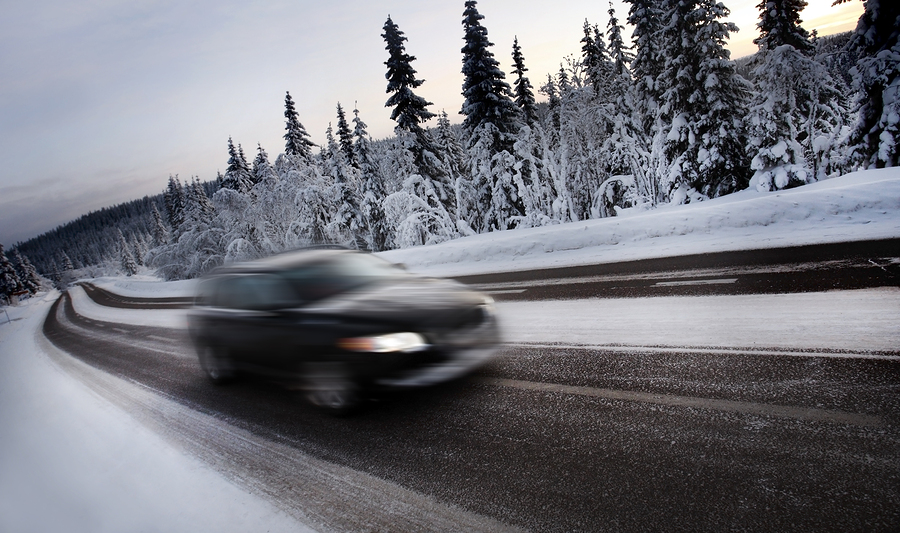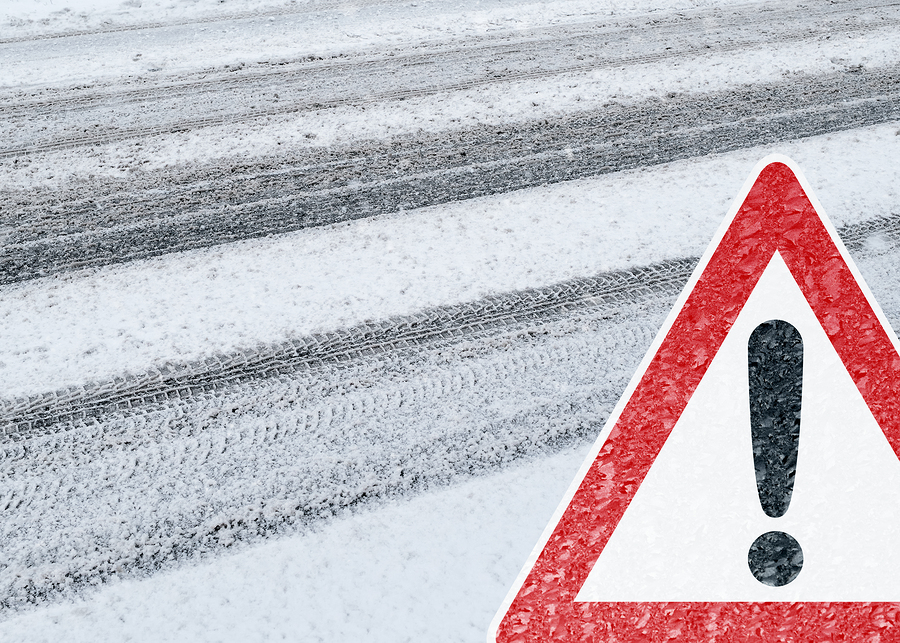Winter Driving Tips: What You Need to Know About Black Ice

Navigating the busy streets and highways during winter is tough enough when the roads are snowy and obviously slippery, but as many of us have experienced, you can’t always tell when danger is lurking ahead. Learning to navigate and detect black ice on the streets is essential to keeping you safe during our cold winter season. We’ve assembled a few simple tips to help you predict and traverse the icy streets and keep you safe while you drive this winter.
What is Black Ice Anyways?
Ice, or more specifically black ice, is particularly sneaky because it sometimes disguises itself as just wet streets. The ice is not actually black but is transparent allowing you to see through to the black asphalt below. This thin, smooth surface can accumulate quickly making it even more difficult to detect. Not knowing the surface of the road is covered in a slick, frozen layer is the real danger because you approach the terrain the same way you would if you had perfect traction.
Now that we know what black ice is, we can look into what causes it. Light precipitation rather than snow or slush is the usual suspect because this moisture can build up in less visually obvious places. When light rain hits pavement that is 0 degrees Celsius a thin glassy layer of ice builds up. This sleek icy mess occurs in specific and unfortunately very common weather conditions.
There are a few warning signs that indicate black ice is beginning to form. When the temperature falls to 0 degrees Celsius and there is wet precipitation, rain and sleet will begin to freeze on the highway upon impact. This smooth icy surface can also appear on busy highways in much cooler temperatures because the friction of the tires on the road melts the snow or flush and brings the pavement to the perfect black ice freezing point. Watch your temperature gauge and when the outside ambient temperature begins to approach 0 degrees, know that black ice is a possibility.
Knowing where the ice typically forms will help you stay safe while driving this winter. Places that receive less sunlight, such as tree lined streets under overpasses or in tunnels. It is also most common in the early morning or late at night, when the sun is not around to warm the roads. It’s common for roadways that frequently incur black ice build up to add signage such as “Road Ices” or “Bridge Ices”. Use caution when driving through these areas in the winter, but also note that just because there isn’t a sign, doesn’t mean there is no ice.

While you’re looking at your temperature gauge and watching for signage, there are a couple other visual warnings that can help you predict when black ice will form. Keep a look out for ice that builds up on your mirror and antenna. This is an indicator that wet precipitation is beginning to freeze. Limited or no tire spray from the vehicles around you al suggests that the ground is doing something far more ominous than accumulating water. When rear tires stop kicking up spray on a seemingly wet street, ice is beginning to form. Finally, frosted road signs and trees with wet looking roads is another useful indicator that the temperature is dropping and you should be careful.
What happens if you hit a patch?
Even if you are on the lookout for the perfect black ice conditions, it’s still possible to hit a patch unexpectedly. Entering a skid is nerve racking but if you can remember how to handle your vehicle, you can safely pull yourself out and regain control. Remember to not hit the brakes, this will only make things worse and unfortunately, it’s usually our first instinct. Release the brake and push in the clutch if you have one. Try to keep your steering wheel straight but if you feel the vehicle begin to pull to the left or right, gently turn your wheel in that direction. Any aggressive movement will only make the skid worse. Patches of black ice are usually not very big so you should be able to regain traction in no time. Practice driving on slippery surfaces to help you gain the confidence you need to drive through the winter.
The best winter driving tips we can give you are simple. Be patient, slow down, and adjust for weather conditions. Even if you are confident in your abilities, not everyone is as accomplished a driver as you are so stay safe and give your fellow road users some well-deserved space.
Stay safe this winter!
Contact Us
(416) 252-6956Give us a call, or click here to send us a message! Or visit us:
Ontario: 75 Arrow Road, North York, ON M9M 2L4
Alberta: 2806 Ogden Road SE, Calgary, AB T2G 4R7
(Click above to get directions)